Open Innovation Platforms - What are There and How to Choose One
All the success stories of open innovation may make it seem like a walk in the park.
Well, it’s not.
There are in fact many aspects involved in the process of taking open innovation from an idea to something actionable.
One of these is having the right platform. (If you're in a hurry, click here to get directly to the listing.)
For the latest article on the topics, and a comprehensive guide to Open Innovation Platforms click here.
So, what does a platform do exatly?
A platform or a “tool” is meant to support your open innovation process. Additionally, it is where some of the innovation activities take place.
Depending on what you want to achieve, different open innovation platforms can facilitate a very wide range of activities. Anywhere from finding suppliers to iterating a new logo.
For example, if your aim is to include customers in R&D, you’d probably benefit from a platform that can be used to gather and develop ideas. On top of that, if your company does things in a very straightforward manner, it’s also very beneficial that the platform is designed to support this process or way of working.
Now, if you simply want access to a large pool of talent to get new perspective on a project you're stuck on, you might be looking for a platform that has access to creative individuals with relevant knowledge and skills.
Table of Contents

What types of platforms are out there?
Open innovation is a fairly loose term and basically covers all creative activities where information passes back and forth through organizational borders. Thus, what it can be used for is basically limitless.
If our listing covered every platform from A to Z you'd still be reading this post a week from now. So, rather than do that, we’ve cherrypicked some of the best tools out there from very different use cases.
Our aim is to give you an understanding of what kind of platforms are out there and how they can be used for open innovation.
Open Innovation Platforms
1. Maistro – Accelerated procurement
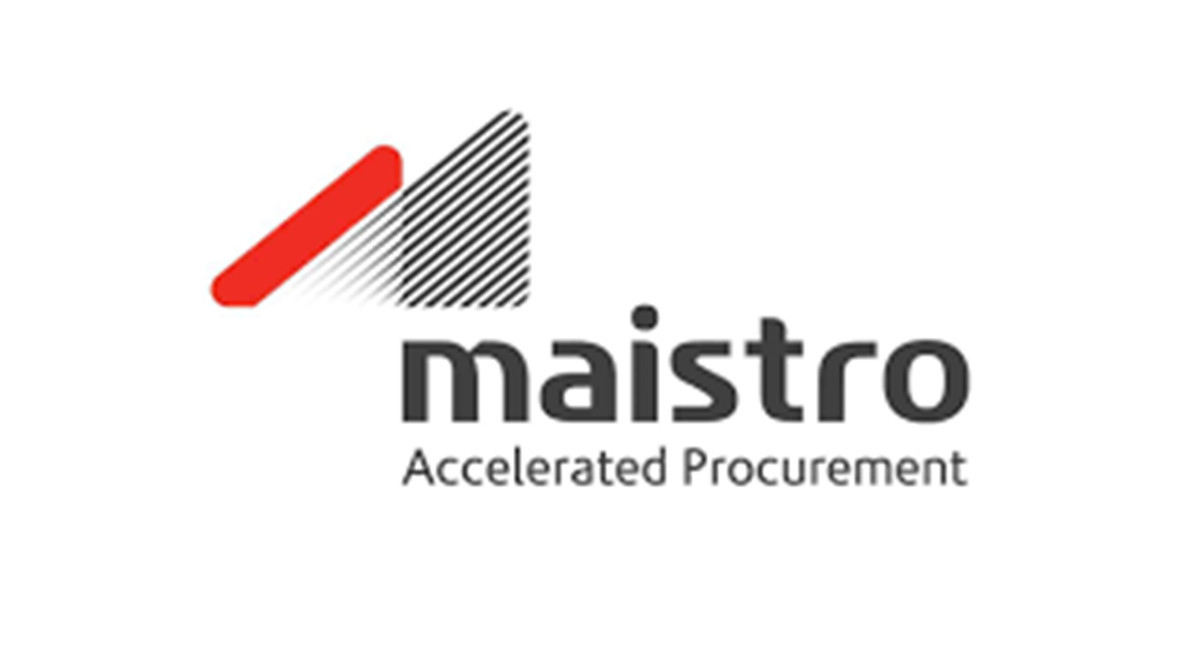
What is it?
Maistro is a business-to-business platform that gives its users access to a marketplace where they can find various suppliers and services. This allows Businesses to connect with the best and most relevant expertise for various projects or ongoing arrangements. As an example of this, De’Longhi Group has been able to meet their demanding marketing needs around the world by using Maistro’s marketplace to find the best services.
What are the key traits?
The key in Maistro’s platform is the established network of different suppliers and service providers that users have access to. For organizations, utilizing this network reduces risky decisions and the resources needed for research, which in turn results in a more efficient way to find more effective solutions. In addition, the network also provides the users a possibility of finding completely new and innovative ways of doing things.
Who could benefit from this?
This platform may work for organizations that are looking for a cost-efficient way to find new reliable services or suppliers, or to change their existing vendors.
2. Viima – The best way to collect & develop ideas
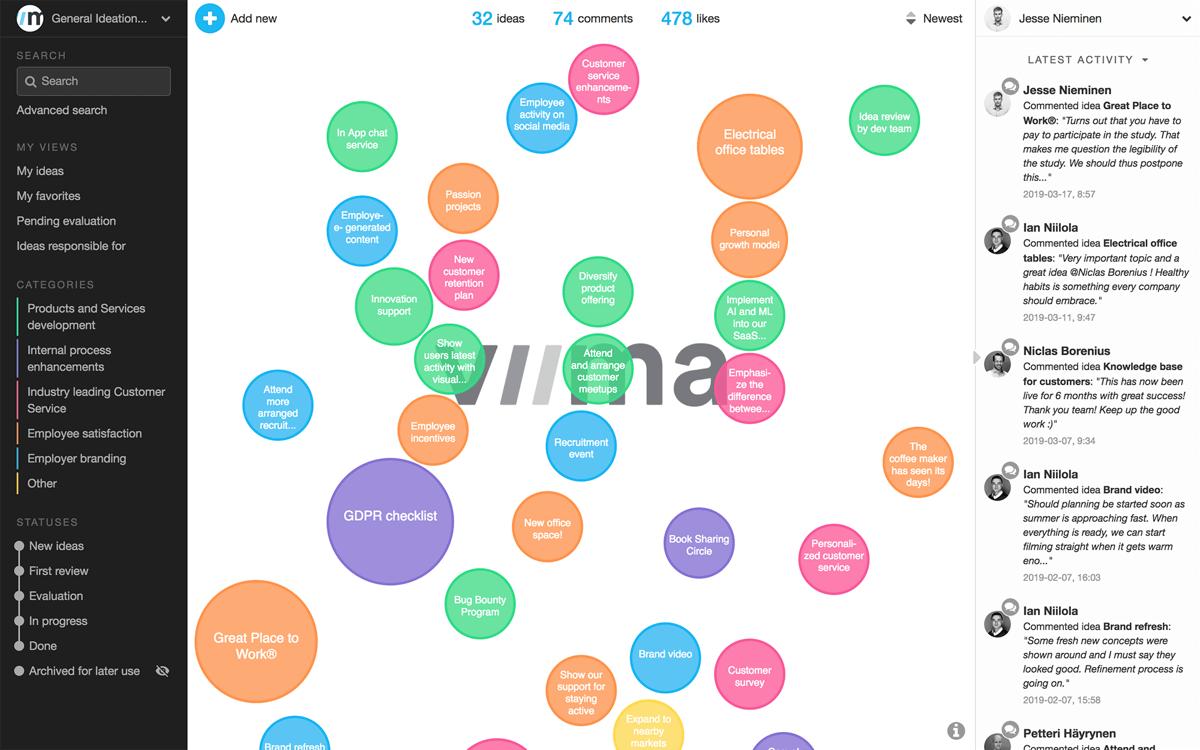
What is it?
Viima is an idea management platform that can be used for gathering ideas and developing them into innovations within a chosen or open group of stakeholders. When people submit ideas, they appear as bubbles in a customizable environment. The more people talk about the ideas or vote for them, the more visible they are. The most popular ideas can be evaluated and further developed into something that can be implemented.
What are the key traits?
Viima is intuitive to use and engaging for those who partake. This makes it easy to gather ideas and effortless for people to join in. For open innovation, Viima can be used anywhere from gathering customer feedback and transparently developing ideas with people outside the organization to hosting open innovation challenges. Easy scalability makes it work smoothly with just a handful of individuals as well as a larger participation.
Who could benefit from this?
This platform is perfect for organizations that are looking for an effortless way of gathering thoughts or ideas from smaller to larger groups and to develop them into something that can be implemented.
3. Ennomotive – The hub for engineering innovation
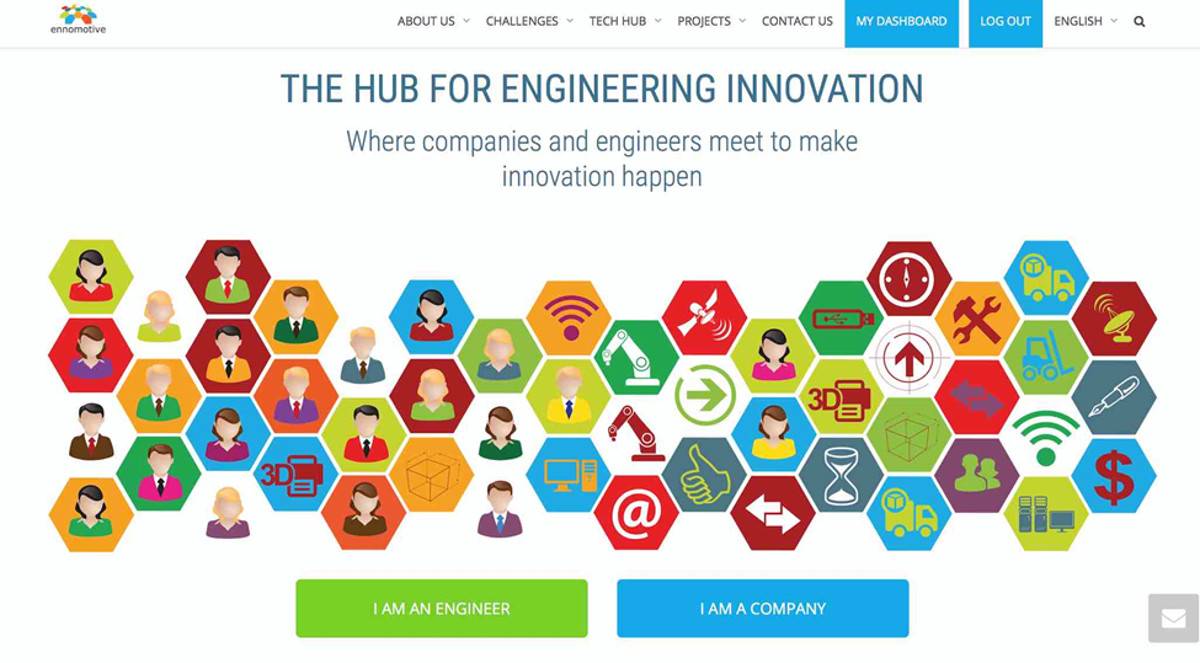
What is it?
Ennomotive is an open innovation platform that specializes in connecting companies and experts of all fields in various projects and win-win partnerships. An organization can sign up on the platform by, for example, proposing a technical challenge. Aspired engineers can then reply to this challenge by proposing their own solutions.
What are the key traits?
The key advantages of Ennomotive’s system are the ease of use of their platform and a wide outreach to people of versatile skills that come searching for work, experience, or curious projects. This makes it easier for organizations to find creative solutions to their problems while also providing experience to aspiring engineers.
Who could benefit from this?
This platform is perfect for organizations that are looking to solve technical challenges and need fresh ideas from talented and creative individuals.
4. Crowdspring – Design done better
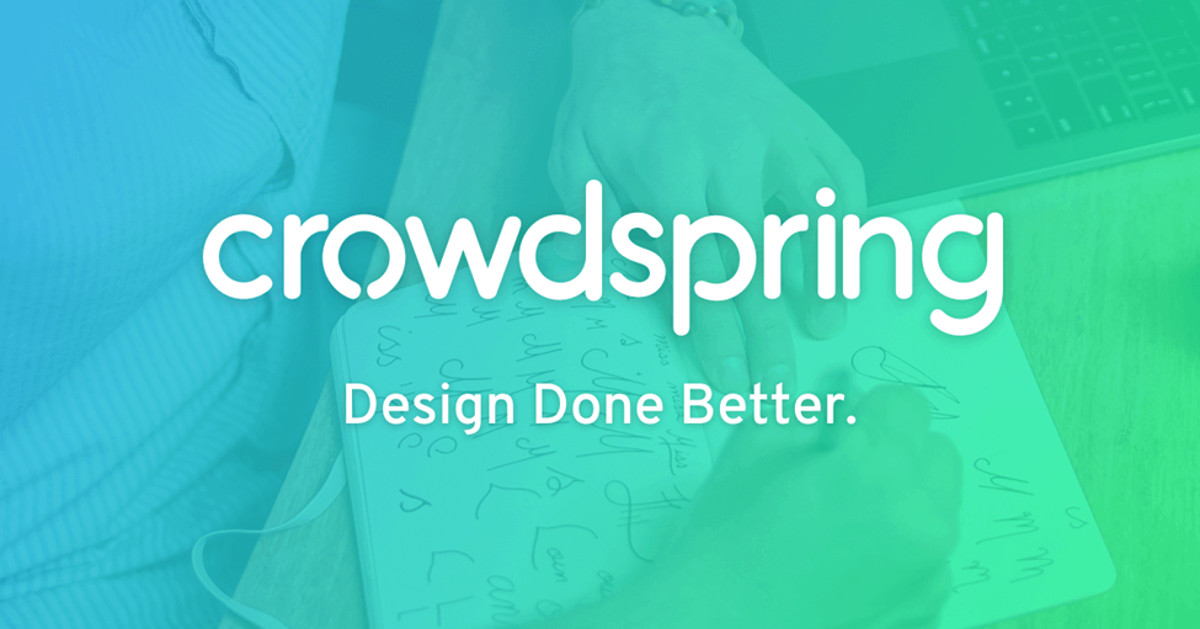
What is it?
Crowdspring is a platform that facilitates various design projects, such as website logo or a book cover, for organizations and private individuals. Crowdspring provides access to thousands of designers worldwide who can submit their designs based on the specifications set by the customer. After the first round of submissions, starts an interactive process of Q&A and where the designers polish their designs based on the customer's feedback. After the customer is satisfied with a design, the designer will receive a prenegotiated reward.
What are the key traits?
What makes Crowdspring stand out is their open innovation angle to design projects, where instead of a few submissions by the same firm, the customer gets a plethora of submissions from very different people. This is made possible by a very easy to use and engaging platform. In addition, their network of designers is a huge asset in finding the right designers for projects of very different specifications.
Who could benefit from this?
This platform is perfect for organizations that are in need of a new or reimagined design and want a very broad spectrum of ideas that can be discussed and molded in an effortless iterative manner. This is also great for smaller low-budget design projects which are likely to be turned down or excessively expensive when outsourced to a dedicated design-firm.
5. Kaggle – The place for data science projects

What is it?
Kaggle is a platform that hosts a community of data scientists and machine learning engineers who together process raw data gathered and submitted by organizations. The people who join Kaggle gain valuable experience and can join competitions for monetary compensation. Organizations can use the analyzed data to make problem-solving conclusions. Additionally, organizations can host competitions to raise their profile in the data science community or to attract and identify talent.
What are the key traits?
Although analyzing raw data is very important for many organizations, setting up a data science environment and identifying relevant data can be very time consuming. Kaggle makes it possible for organizations to gain valuable insights from their raw data without having to analyze it all themselves. Additionally, they gain the help of talented experts around the world. In the future, Kaggle has planned on providing their collaborative environment as a freemium service for organizations’ data science teams.
Who could benefit from this?
Especially large organizations without existing (or lacking) data science environments and access to raw data, which – if analyzed – could be useful to them, can benefit from Kaggle’s platform.
How to Choose the Right Platform
So how does one go about choosing a platform?
Typically, it starts by finding out what you want to do. Then you can start looking for a platform that might get you there. The goal is to find a promising list of candidates, shortlist them, and then start piloting until you find something that works.
It is, however, not always easy to tell right off the bat which ones should make the list. After all, many platforms seem to have dubiously similar value promises.
For this reason, we've gathered some tips and tricks to help you make the determination. Although, keep in mind that there are many other aspects that also affect which tool you ultimately end up with.
- Start with your goals
Always remember to start with addressing your goals. What is it that you want to achieve? If you understand your destination, it’s much easier to choose a platform that will help you get there and not be distracted by the wrong choices.
For example, if a company needs fresh ideas to solve a technical problem, such as making a manufacturing process more cost-efficient, Ennomotive is probably a great candidate for the list. A platform like Maistro is not. The funny thing is that both can be found by Googling for open innovation platforms.
- Check characteristics
Different platforms have different characteristics; the philosophy around which the platform has been designed, if you will.
For example, if you compare Android with Apple, the fundamental arguments behind their designs are quite different. One is designed to be customizable by arguing that “people know their own needs best”. The other is designed to be a complete package via the argument: “We know what people want.”
Taking a closer look at the characteristics of a platform can be a huge help in identifying a good match for your organization. If a platform has been designed based on a philosophy similar to your own, it's obviously a good indication that it could support your ways of working.
- Custom or off-the-shelf?
Some platforms out there are deployed as "custom" orders and others can be taken into use right away “off the shelf”. This is an important thing to be aware of.
Custom platforms are customized by the vendor for a specific case. These are typically meant for enterprise customers and often have the specific features requested by the customer. They’re tuned for doing a specific thing well, however, they’re also more complicated to use and slow and costly to initiate.
Off-the-shelf platforms are – as the name would indicate – aimed towards organizations of a more general size. They’re often easy to use, scalable, and can be initiated quite effortlessly. In addition, many off-the-shelf platforms are customizable. However, as not all are, some of these platforms may lack in versatility.
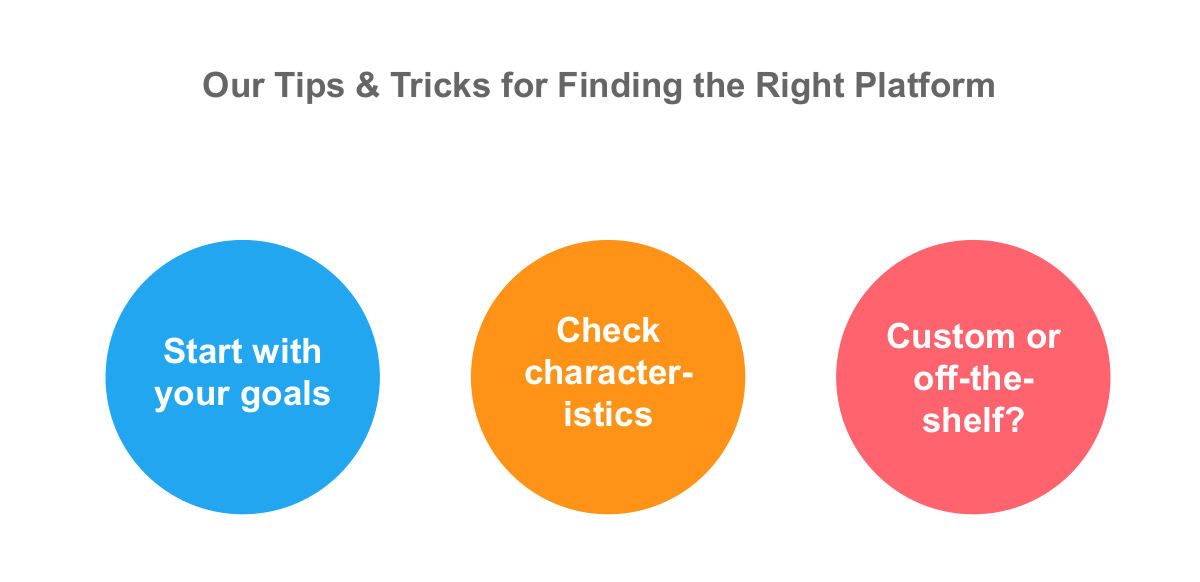
The Importance of Piloting
No matter how well you do your homework, when trying out something new – like open innovation is for many – there's a good chance you might stumble a couple times.
Thus, it would be naïve to say “Take these things into consideration, follow this process, and choose a platform off a list. Bam! You’re done.”
No amount of research and shortlisting will give you the full scope of how it works in practice or if the platform supports your ways of working. That’s why it's important to pilot software.
Doing pilots allows you to a) test the platform, b) check for compatibility with the platform, and c) test your ways of working.
Some vendors offer free user-based versions, like us here at Viima, and some have demos or other free trials. Regardless, it’s important to keep a look out for those.
Additionally, piloting may also help evaluate if you you’re searching via the wrong criteria (aka, your goals are misguided), or your ways of working or processes are wrong for what you want to achieve.
Final Thoughts
Things may not always go according to plan, but don't panic. Take them as learning opportunities. At these times it may be wise to take a step back and reassess what you’re doing.
Are you sure you have the right goals?
Can one platform really do what you’re out to achieve?
Sometimes you may even need multiple platforms for the versatile range of activities you wish to do. Think about it. Wouldn’t you rather have two tools that do their specific function exceptionally, rather than one that does both adequately?
Build on your experiences, learn from your mistakes, and take moment to reflect every now and then. In open innovation, patience and commitment are ultimately rewarded.







